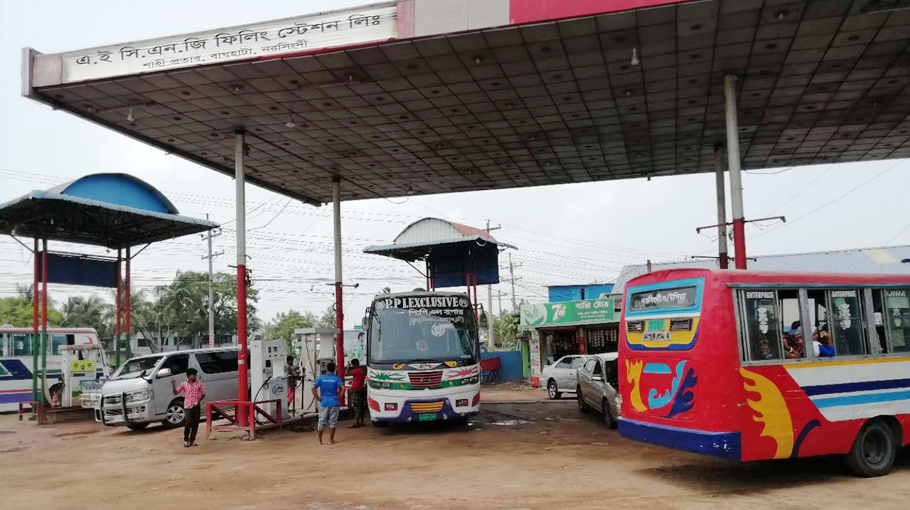Where are the CNG-run buses?

A different scenario was witnessed across the capital city on Monday with CNG-powered vehicles hard to find on roads, immediately after the bus fare hike shutdown had ended.
All bus representatives are claiming their buses run on diesel.
After a three-day shutdown, the minimum fare for diesel-powered buses has been raised from Tk 8 to Tk 10. However, the fare for CNG-powered public transport has been kept unchanged. No visible difference was noticed in the fares of CNG and diesel powered transport.
As a result, passengers are getting involved in arguments with bus staff about the fare. However, no law enforcement agencies or authorities concerned are found on the street to monitor the new fare.
While visiting the capital’s Mirpur, Farmgate, Shahbag, Paltan, Gulistan, Sadarghat, Rampura, Badda and Hatirjheel areas on local buses and talking with bus drivers and staff, this reporter learned that their respective buses are running on diesel.
Read more: CPA-WB row may delay Bay terminal
It used to cost Tk 30 to visit around Hatirjheel circle, now it costs Tk 40. From FDC to Merul Badda it used to cost Tk 15, but now it has been increased to Tk 20.
Amzad, a private job holder who daily moves on Mirpur-Sadarghat-Mirpur route told this journalist, “Even if we get on a CNG bus, we have to accept that it is a diesel- powered bus. For so many years, I have learned that the CNG-powered buses that I avail in the morning have suddenly become diesel-powered overnight. From Sadarghat to Mirpur it used to cost Tk 30 but now the fare has gone up to Tk 45.”
While talking to different bus staff, it was also learned that they are still to get their new bus fare chart. The new chart is likely to be ready within the next one or two days following the bus owners association meeting. However, without having the new fare chart, they are taking the high fare of their own.
According to the transport owners and workers organizations, the number of buses and minibuses currently operating in Dhaka is around 5000. About 95 percent of the buses and minibuses use CNG as fuel. But none of them are obeying government order.
Bangladesh Passenger Welfare Association Secretary General Mozammel Hoque Chowdhury acknowledging this said, “To minimize operating cost, bus owners used CNG to cut their cost. Around 95 percent of the buses plying on the road are CNG-powered. The fare is higher because bus owners take fares as per waybill management, which is increasing the fare sometimes more than double.”
Opposing the issue, Bangladesh Road Transport Authority (BRTA) Chairman Noor Mohammad Majumder said, “Only one percent to two percent of the buses in the country use CNG as fuel.”
Bangladesh Road Transport Owners Association secretary General Khandaker Enayetullah also agreed with the BRTA chairman.
After a meeting while talking to journalists on Sunday he said, “None of the buses in Bangladesh that use CNG as fuel have been imported as CNG-powered buses. After importing later they were converted to CNG. When I went to use these buses, I saw that the engine broke down within six months. Owners are no longer converting bus fuel to CNG due to high maintenance costs. There are not many CNG-powered buses in the country at present.”
During the meeting, when asked how CNG-powered buses will be identified, the BTRC chairman replied, “I would like to make it clear to the transport owners that the new fare is only for diesel powered buses. Even after that, if any CNG-powered bus executes the new fare, disciplinary action will be taken against them through the BRTA mobile court. Besides, the law enforcement agencies will also monitor the matter.”




